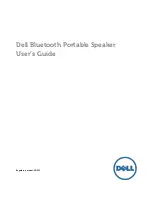
13
OPM-128/E
2. Wash the element in a solution of household detergent
and warm water, then rinse thoroughly. Or wash
in a non-flammable or high flash point solvent. Allow
the element to dry thoroughly.
3. Soak the air filter element in clean engine oil and
squeeze the excess oil. The engine will smoke during
the initial start up if too much oil is left in the element.
4. Reinstall the air filter element and the cover.
SEDIMENT CUP
DANGER: PERSONAL INJURY
Gasoline is highly flammable and explosive, and you can be
burned or seriously injured when handling fuel.
1. Remove the fuel valve to the OFF position, then
remove the fuel sediment cup and O-Ring.
2. Wash the sediment cup in non-flammable solvent, and
dry
thoroughly.
3. Place the O-Ring in the fuel valve and install the
sediment cup. Tighten the sediment cup securely.
4. Move the fuel valve to the ON position, and check for
leaks. Replace the O-Ring if there is any leakage.
SPARK PLUG
Replace annually or every 300 hours of operation. Always
replace with the same spark plug that came in the engine
and check gap before installing. Spark plug gap is 0.030”.
Poor spark will also occur if spark plug wire does not fit
firmly on spark plug. If this happens, reform the terminal to
fit firmly on spark plug tip.
CARBON CANISTER
Designed to collect, store, and dispose of fuel vapors
created in the fuel tank/fuel system. The canister should last
the life of the unit as long as it stays dry.
GENERATOR CARE
Proper care and maintenance of the generator is necessary
to ensure a long trouble free life.
EXERCISING THE GENERATOR
The generator should be operated every three to four
weeks. It should be operated for a period of time sufficient
to warm the unit up and to dry out any moisture that has
accumulated in the windings. If left, this moisture can cause
corrosion in the winding. Frequent operation of the engine-
generator set will also ensure that the set is operating
properly should it be needed in an emergency.
GENERATOR MAINTENANCE
Any major generator service, including the installation
or replacement of parts, should be performed only by a
qualified electrical service technician.
USE ONLY FACTORY
APPROVED REPAIR PARTS.
A. Bearing - The bearing used in these generators is a
heavy duty, double sealed ball bearing. They require
no maintenance or lubrication.
B. Receptacles - Quality receptacles have been utilized. If a
receptacle should become cracked or otherwise
damaged, replace it. Using damaged or cracked
receptacles can be both dangerous to the operator
and destructive to the equipment.
CLEANING
Remove dirt and debris with a cloth or brush. DO NOT
use high pressure spray to clean either the engine or the
generator. The high pressure spray could contaminate the
fuel system and the generator components.
1. Keep the air inlet screen on both the engine and
generator free of any dirt or debris to ensure proper
cooling. At least yearly, remove the blower housing on
the engine and clean the chaff and dirt out of the engine
cooling fins and fly wheel. Clean more often if necessary.
Failure to keep these areas clean may cause overheating
and permanent damage to the unit.
2. Periodically clean muffler area to remove all grass, dirt,
and combustible debris to prevent a fire.
3. On engine mufflers equipped with spark arresters, the
spark arrester must be removed every 50 hours for
cleaning and inspection. Replace if damaged.


































